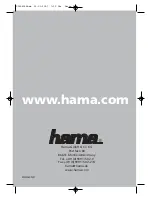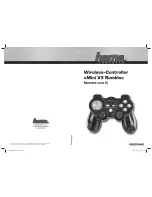
P/N
06
‐
791
‐
4
(Rev.
4)
Page
45
704
SW
10
th
Street,
P.O.
Box
610,
Blue
Springs,
Missouri
64013
‐
0610
U.S.A.
●
Phone:
(816)
229
‐
3405
●
www.fike.com
Determine
Size
of
Fire
Pump
Required
Sizing
and
selection
of
a
fire
pump
is
based
on
the
calculated
system
demand.
The
required
capacity
(flow)
and
pressure
rating
of
the
fire
pump
is
determined
by
the
difference
between
the
flow
and
pressure
available
from
the
attached
water
supply
and
the
flow
and
pressure
required
by
the
water
mist
system.
To
size
and
select
an
appropriate
fire
pump,
the
following
physical
characteristics
of
the
system
must
be
considered:
1.
Determine
maximum
system
flow
rate.
To
size
and
select
a
centrifugal
pump,
the
maximum
system
flow
rate
(gpm/lpm)
for
the
system
must
be
determined.
See
Section
3.12.3
for
instructions
on
how
to
determine
the
system
flow
rate.
2.
Determine
Net
Positive
Suction
Head
Available
(NPSHA)
from
water
supply.
The
characteristics
of
the
connected
water
supply
must
be
determined
in
order
to
select
the
correct
fire
pump
based
on
its
performance
characteristics.
See
section
3.11
for
water
supply
details.
The
NPSH
A
must
be
positive.
3.
Determine
friction
head
(pressure
loss)
through
the
pipe
distribution
system.
The
friction
loss
depends
on
the
flow
rate,
the
pipe
size,
the
pipe
length,
and
elevation
changes
in
the
system.
Piping
components,
such
as
valves,
fittings,
backflow
preventers,
etc.,
must
also
be
factored
into
the
system
friction
loss
calculations.
Actual
system
friction
loss
shall
be
determined
by
hydraulic
calculations.
4.
Calculate
the
required
total
head
for
the
pump.
The
required
total
head
for
the
pump
is
the
difference
between
NPSH
A
from
the
connected
water
supply
and
the
friction
head
loss
of
the
pipe
distribution
system.
5.
Select
the
pump.
Select
the
pump
based
on
the
pump
curve
information
provided
in
Annex
D.4,
using
the
total
head
and
flow
determined
in
the
previous
steps.
The
selected
pump
must
be
adequate
to
meet
both
the
flow
and
pressure
demands
for
the
system.
NOTE
‐
NFPA
750
requires
that
a
fire
pump(s)
be
selected
to
provide
a
minimum
of
110%
of
the
required
system
water
flow
and
pressure;
whereas,
FM
Property
Loss
Prevention
Data
Sheet
4
‐
2
requires
that
a
fire
pump
be
sized
to
provide
120%
of
the
required
system
water
flow
rate,
at
the
minimum
system
operating
pressure.
The
following
formula
can
be
used
to
estimate
the
size
and
number
of
pumps
required
to
serve
the
protected
area
based
on
the
total
water
flow
required.
NOTE
‐
Using
the
formula
above,
in
most
cases,
will
result
in
the
selection
of
a
fire
pump
that
is
oversized
for
the
application.
Hydraulic
calculations
shall
be
performed
in
order
to
determine
the
actual
required
capacity
of
the
fire
pump.
N
PUMPS
=
Q
MAX
/
q
Where:
N
PUMPS
=
Number
of
pumps
Q
MAX
=
Total
flow
for
area
(gal/min
or
l/min)
+
safety
factor
(10%
NFPA
or
20%
FM)
q
=
Flow
rate
output
of
selected
pump
unit
Summary of Contents for DuraQuench
Page 93: ......
















































